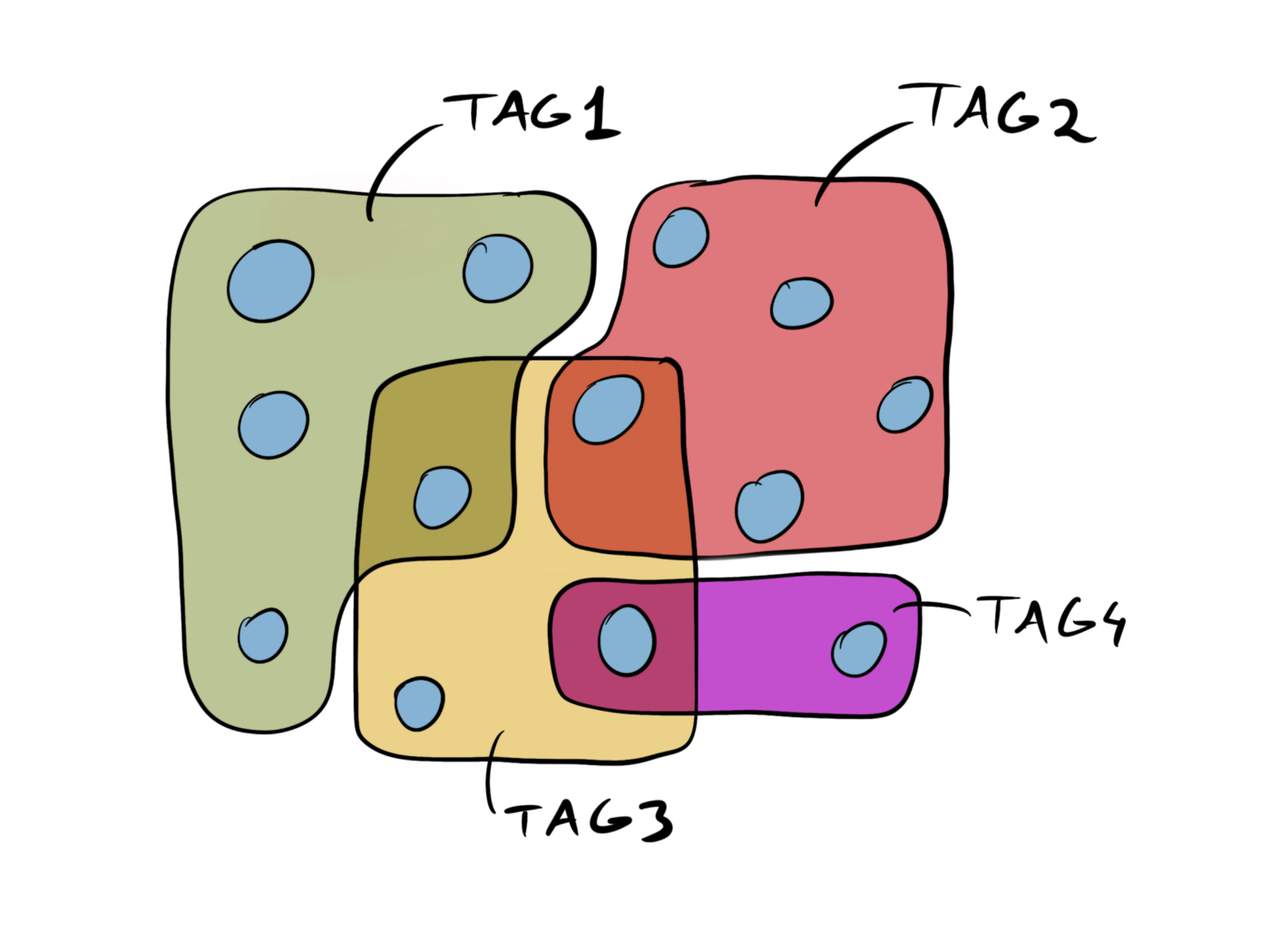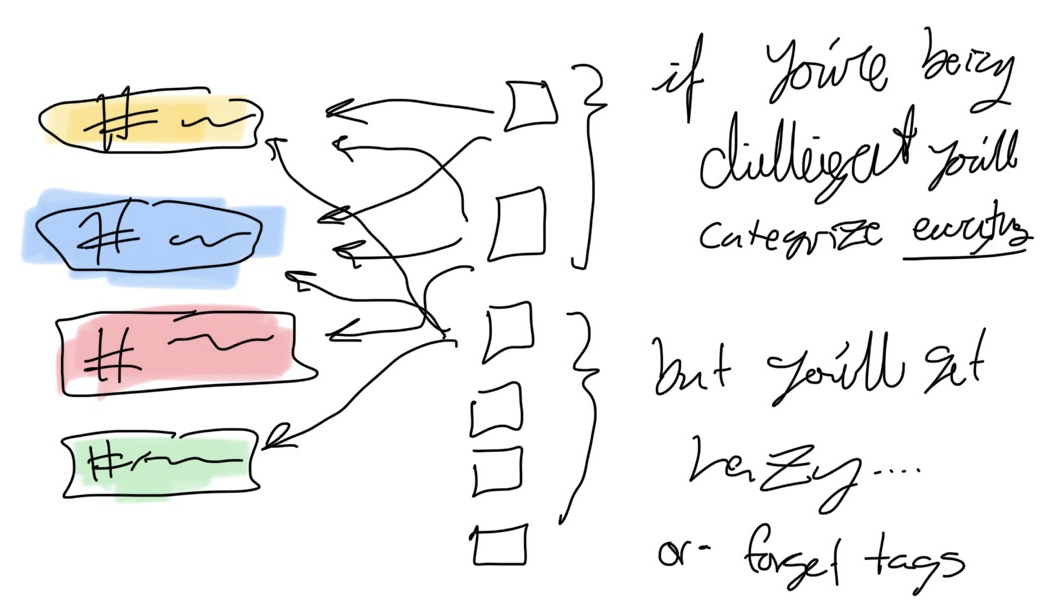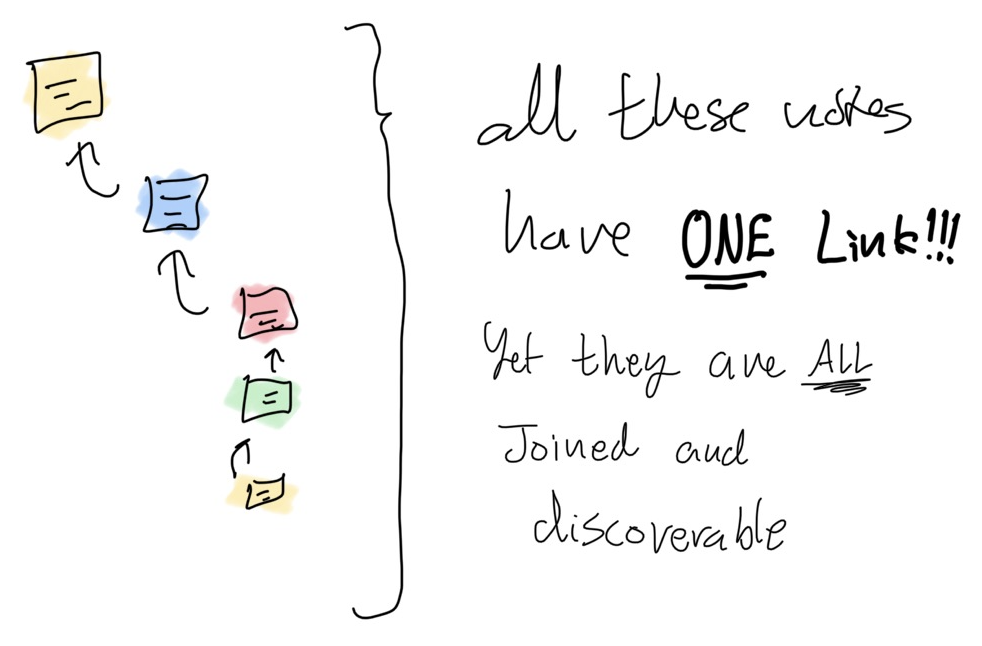Zettelkasten
The zettelkasten (German: "slip box") is a knowledge management and note-taking method used in research and study.
Niklas Luhmann built up a zettelkasten of some 90,000 index cards for his research, and credited it for enabling his extraordinarily prolific writing (including over 70 books and 400 scholarly articles).
Reference: https://en.wikipedia.org/wiki/Zettelkasten
Links
Why Zettelkasten:
Journal VS Zettelkasten 🔖
Journal VS Zettelkasten
Journal has a fixed linear structure where you always put information at the end. It's like you're posting information to a Newsfeed on facebook. Append-only.
Zettelkasten is about constantly putting information in the middle.
Creating branches of thought. Also IDs are there too to help it be even more flexible to make it a full graph.
See also: Youtube -- Building on ideas Zettelkasten
Folders V.S Tagging V.S Graphs V.S. MOCs 🔖
Folders
Each item can only be on one folder at a time, often the support nesting in a tree. This is often too rigid to be useful.

Tagging
Tagging allows one note to be attached to many tags. These are much more flexible, BUT often leads to a small amount of categories that are infinitely deep.

Graph
A graph is when you take the notes and you directly connect them to one another so while the graph may be complex if you look at the local graph (just the notes that are connected to one note) then you can more easily explore related ideas leading to inspiration

Ref: Medium--Zettelkasten — How One German Scholar Was So Freakishly Productive
Links:
Zettelkasten solves never reviewing notes 🔖
It's about constant connecting, although not too much
Zettelkasten
All you have to do is just link one note!
In Zettelkasten all you have to do is link one note 🔖
In a normal tagging system you have to link every note diligently or else they are lost in the system. Adding lots of tags is the only way to keep it easy to discover things. Even then these tags often get [[Folders V.S Tagging V.S Graphs V.S. MOCs#Tagging|bloated]].
Example:

- Effort? High! Constant dilligent tagging!
- Flexibility? Low, can only view according to tags and individual notes. Probably won't scale and will require you to break out into different more granular tags modifying tons of notes, not something you're going to do.

- Effort? Low! Just one link is needed. Even these can be added later with Unlinked mentions.
- Flexibility? High! You can create MOCs and other such systems at any time to bring more order to the chaos, yet even a single link will help it to never be lost or forgotten.
Learning References:
- Medium--Zettelkasten — How One German Scholar Was So Freakishly Productive
- Youtube -- Introduction to Zettelkasten
- Source--This Note-Taking App is a Game Changer - Roam Research
- The Second Brain - A Life-Changing Productivity System
- Joel Chan- Zettelkasten and Evergreen Notes for Generative Thought
Pro-tips
- The Collector's Fallacy
- Knowledge, Innovation, Value and Wisdom
- Youtube -- Building on ideas Zettelkasten
- Never delete notes from your Zettelkasten
- MOC
- Folders V.S Tagging V.S Graphs V.S. MOCs
Other:
Backlinks:
- A personal Zettelkasten static site generator
- Andy's Working Notes
- Associative Thought
- Digital Garden
- Folders V.S Tagging V.S Graphs V.S. MOCs
- Gitlab--Wikis don't scale
- IMF V3
- Joel Chan- Zettelkasten and Evergreen Notes for Generative Thought
- Journal VS Zettelkasten
- LYT System
- MOC
- Never delete notes from your Zettelkasten
- Source--Keep Digging
- Source--This Note-Taking App is a Game Changer - Roam Research
- The Collector's Fallacy
- The Second Brain - A Life-Changing Productivity System
- Zettelkasten solves never reviewing notes
- index